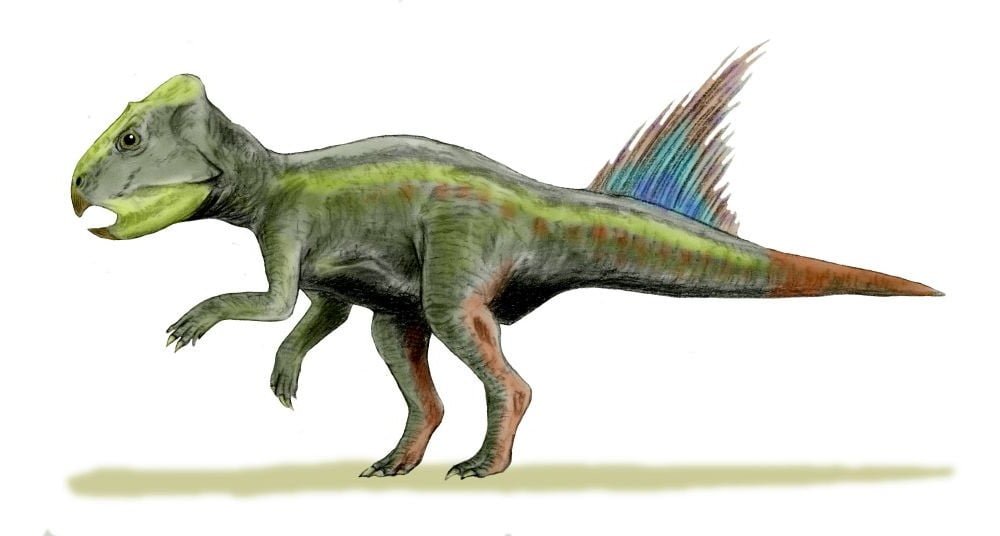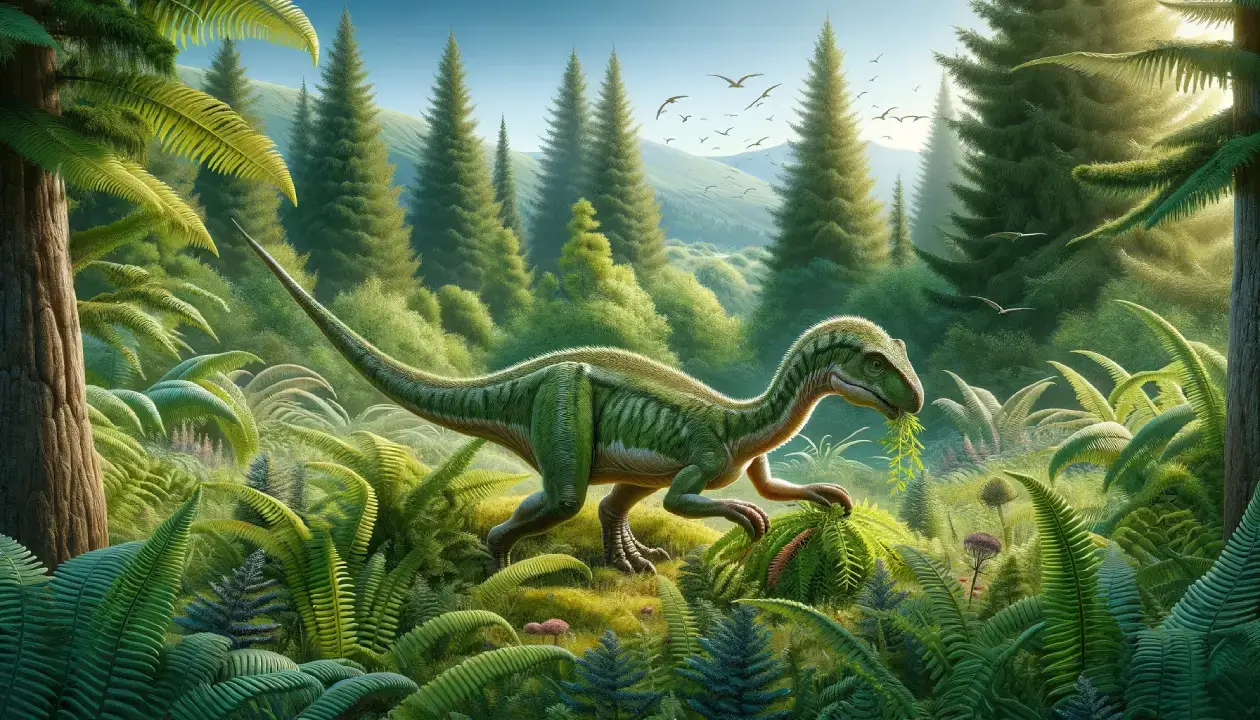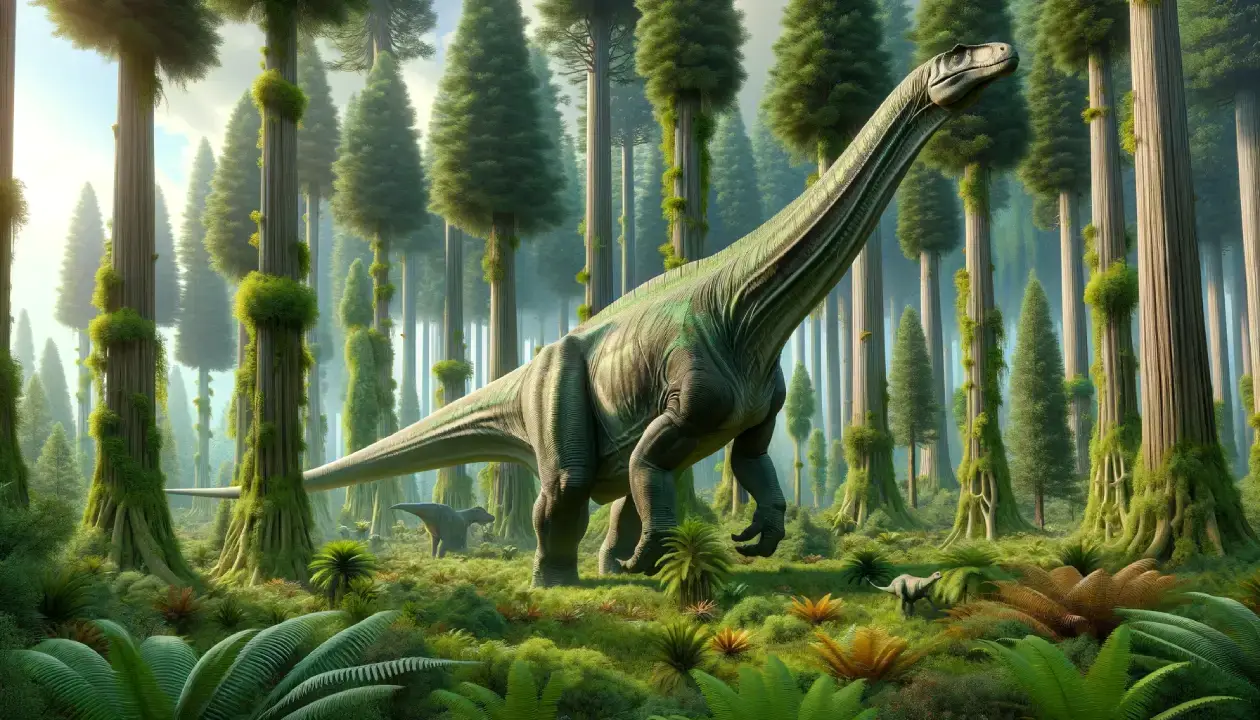Archaeoceratops was an early horned dinosaur that lived in what is now China during the Early Cretaceous period, about 125 million years ago. It was one of the first dinosaurs to be discovered in the Jehol biota, a rich and diverse fossil site. It had a beaked snout, a large bony frill on the back of its head, and two large horns above its eyes. It was a bipedal herbivore that fed on the vegetation of its time.
Basic Information
| Feature | Details |
| Time Period | Early Cretaceous (125-99 million years ago) |
| Diet | Herbivore |
| Length | 1.3 meters (4.3 feet) |
| Weight | 10 kilograms (22 pounds) |
| Size | Small |
| Posture | Bipedal |
| Locations | China |
| Continent | Asia |
| Type | Ornithopods |
| Habitats | Grasslands, Floodplains |
Description of Archaeoceratops
Historical Context
Archaeoceratops was the first dinosaur to be discovered and named in China, in 1997 by Dong Zhiming and Azuma. It was found in the Xinminbao Group, which dates back to the Aptian stage, about 125 to 99 million years ago. Archaeoceratops was one of the earliest members of the Neoceratopsia, a group of beaked dinosaurs that had bony frills on their heads. It may have been related to other neoceratopsians from South America and Africa.
Physical Attributes
Archaeoceratops was a small herbivorous dinosaur that belonged to the group of ornithopods, which were characterized by their beaked mouths and hoof-like feet. Archaeoceratops had a low-slung body with short legs and a long tail. Its head was wide and flat, with small eyes and nostrils that faced sideways rather than forward. Its jaws were covered with a horny beak and had small, peg-like teeth for cropping plants. Its most distinctive feature was its frill, which was located far in front of the eyes and rose sharply from the nasal bone like a bump. The frill was hollow and connected to the respiratory system, and may have been used for sound production or display.
Feeding Habits
Archaeoceratops was a herbivore that fed on low-growing plants such as ferns, cycads, and horsetails. It had a broad muzzle that allowed it to take large bites of vegetation. It did not have complex teeth for chewing, so it swallowed its food whole or with minimal processing. It had a large gut that could digest tough plant matter with the help of symbiotic bacteria. Archaeoceratops may have used its frill to communicate with other members of its herd or to warn off predators.
Unique Features
Archaeoceratops had several unique features that distinguished it from other ornithopods and dinosaurs. One of them was its size, which was smaller than most other neoceratopsians. It reached a length of 1.3 meters (4.3 feet) and a weight of 10 kilograms (22 pounds). Another unique feature was its frill, which was different from the more elaborate frills of other neoceratopsians. The frill of Archaeoceratops was simple and bumpy, and did not extend over the eyes or the back of the head.
Movement and Speed
Archaeoceratops was not a fast or agile dinosaur. It walked on two legs and had a low center of gravity, which made it stable but also limited its mobility. It could not turn quickly or run for long distances. Its top speed has been estimated to be around 10 km/h (6 mph), similar to a human walking pace. However, it could make sudden movements when necessary, such as raising its head or swinging its tail.
Cultural Impact
Archaeoceratops has not been featured in many books, movies, games, or toys as a popular dinosaur. It is often overshadowed by other ornithopods such as Iguanodon, Parasaurolophus, or Edmontosaurus. However, some examples of its appearances in popular culture are Dinosaur King (2007-2009), a Japanese anime series where it is one of the main characters’ dinosaurs, and Jurassic World Evolution (2018), a video game where it is one of the unlockable dinosaurs.
Interesting Facts
- Archaeoceratops was the first dinosaur to be discovered and named in China, in 1997.
- Archaeoceratops lived about 125 to 99 million years ago, during the Aptian stage, and are now known from fossils in the Xinminbao Group of modern-day Gansu Province.
- Archaeoceratops was one of the earliest members of the Neoceratopsia, a group of beaked dinosaurs that had bony frills on their heads.
- Archaeoceratops had a simple and bumpy frill that rose sharply from the nasal bone like a bump.
- Archaeoceratops was smaller than most other neoceratopsians. It reached a length of 1.3 meters (4.3 feet) and a weight of 10 kilograms (22 pounds).
Related Dinosaurs
- Auroraceratops: A close relative of Archaeoceratops that had a more complex frill and lived in China.
- Protoceratops: Another close relative of Archaeoceratops that had a similar frill and lived in Mongolia and China.
- Leptoceratops: A more distant relative of Archaeoceratops that had a smaller frill and lived in North America.







